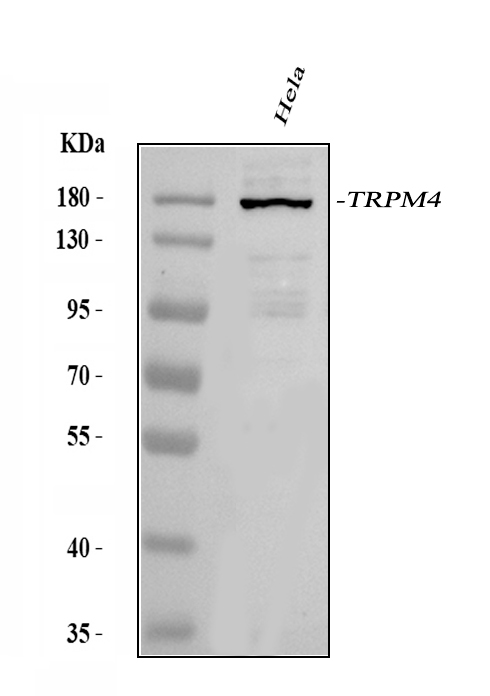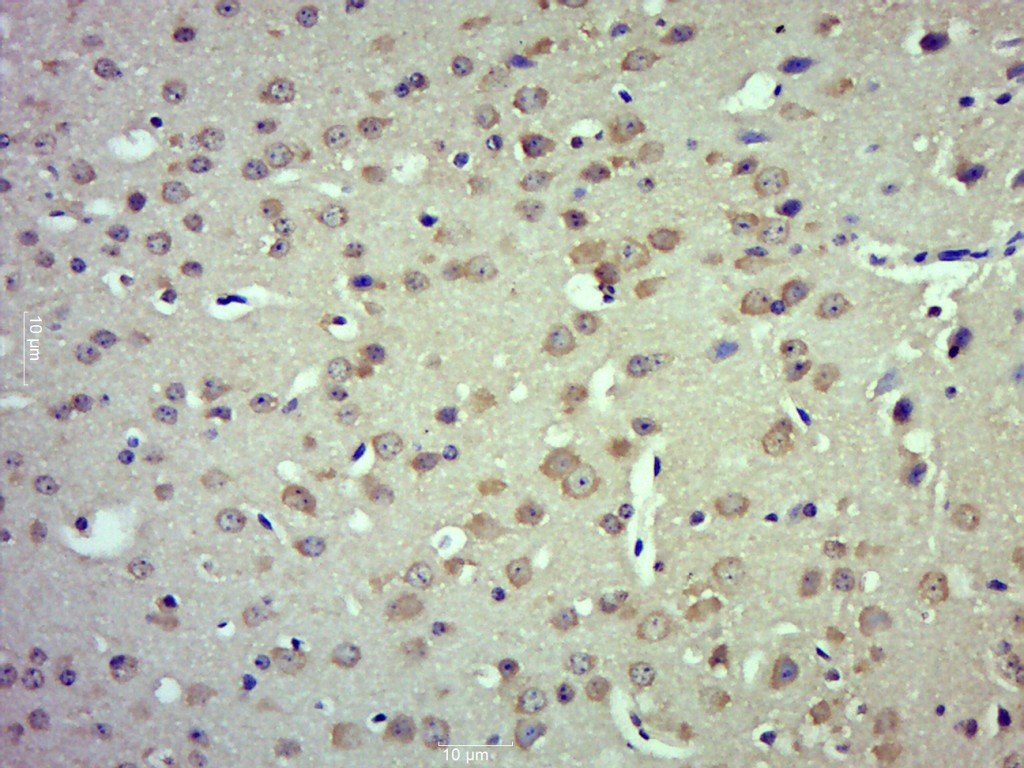
Immunohistochemistry of paraffin-embedded human prostate cancer using CSB-PA819465ESR2HU at dilution of 1:100
TRPM4 Antibody
CSB-PA819465ESR2HU
ApplicationsELISA, ImmunoHistoChemistry
Product group Antibodies
ReactivityHuman
TargetTRPM4
Overview
- SupplierCusabio
- Product NameTRPM4 Antibody
- Delivery Days Customer20
- ApplicationsELISA, ImmunoHistoChemistry
- CertificationResearch Use Only
- ClonalityPolyclonal
- ConjugateUnconjugated
- Gene ID54795
- Target nameTRPM4
- Target descriptiontransient receptor potential cation channel subfamily M member 4
- Target synonymsEKVP6, LTrpC4, PFHB1B, TRPM4B, hTRPM4, transient receptor potential cation channel subfamily M member 4, calcium-activated non-selective cation channel 1, long transient receptor potential channel 4, melastatin-4
- HostRabbit
- IsotypeIgG
- Protein IDQ8TD43
- Protein NameTransient receptor potential cation channel subfamily M member 4
- Scientific DescriptionCalcium-activated non selective (CAN) cation channel that mediates membrane depolarization. While it is activated by increase in intracellular Ca(2+), it is impermeable to it. Mediates transport of monovalent cations (Na(+) > K(+) > Cs(+) > Li(+)), leading to depolarize the membrane. It thereby plays a central role in cadiomyocytes, neurons from entorhinal cortex, dorsal root and vomeronasal neurons, endocrine pancreas cells, kidney epithelial cells, cochlea hair cells etc. Participates in T-cell activation by modulating Ca(2+) oscillations after T lymphocyte activation, which is required for NFAT-dependent IL2 production. Involved in myogenic constriction of cerebral arteries. Controls insulin secretion in pancreatic beta-cells. May also be involved in pacemaking or could cause irregular electrical activity under conditions of Ca(2+) overload. Affects T-helper 1 (Th1) and T-helper 2 (Th2) cell motility and cytokine production through differential regulation of calcium signaling and NFATC1 localization. Enhances cell proliferation through up-regulation of the beta-catenin signaling pathway.
- ReactivityHuman
- Storage Instruction-20°C or -80°C
- UNSPSC41116161







![WB analysis of various cell lines using GTX83490 TRPM4 antibody [3C4]. Loading : 35 ug per lane Dilution : 1:200](https://www.genetex.com/upload/website/prouct_img/normal/GTX83490/GTX83490_3420_WB_w_23061419_110.webp)
